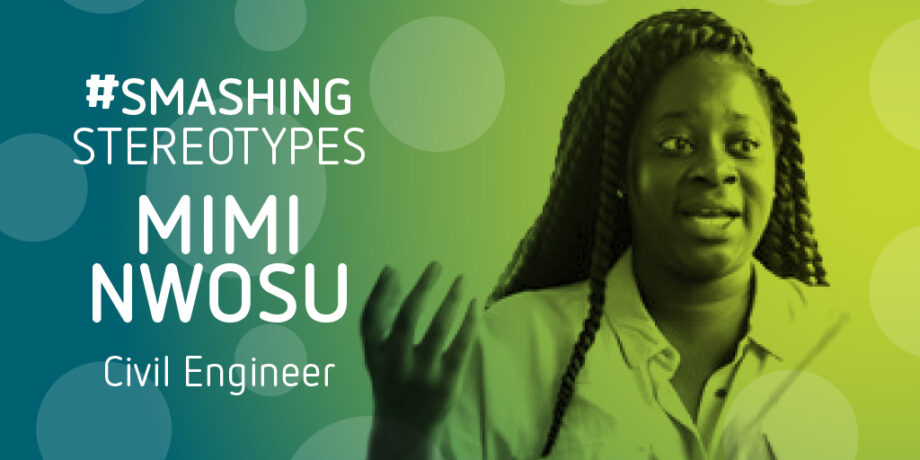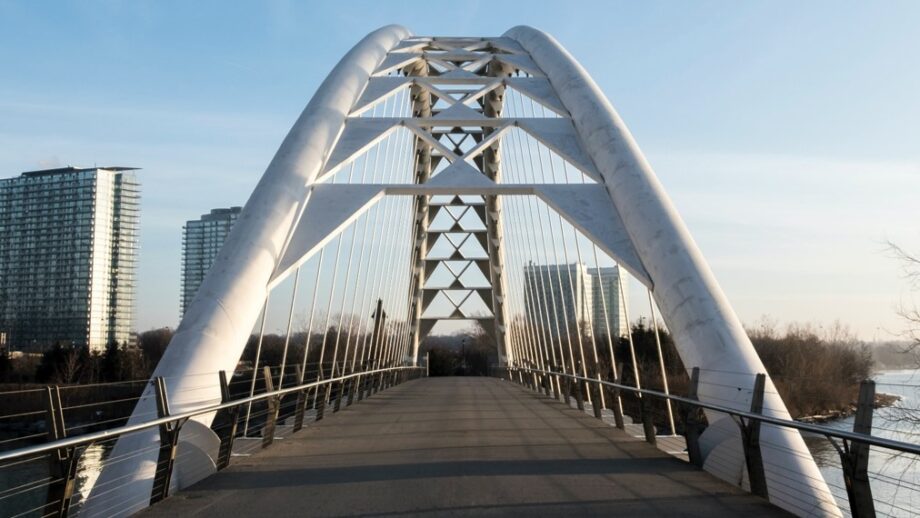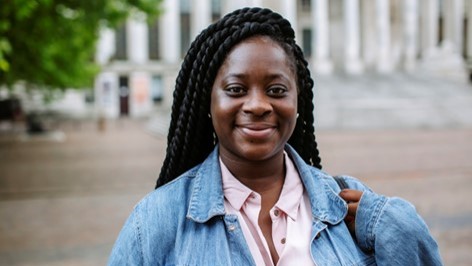
Mimi Nwosu
Civil Engineer, Heathrow Airport
Building bridges for women in engineering
A chance encounter led Mimi to study Civil Engineering at the University of Portsmouth, and she’s never looked back. She has since gone on to win multiple awards including the Rising Star in STEM award from the Women Leaders Association. In 2021, she was named one of the “Top 50 women in Engineering” by the Women’s Engineering Society.
Mimi has built an impressive career working at Heathrow Airport as a Civil Engineer within the Engineering and Baggage function in the Technical Services team.
When I started my A-levels in 2010, I had high hopes of becoming a medical professional, but it wasn’t to be. I found A-levels hard and, unfortunately, my grades in biology, chemistry, psychology, and religious studies didn’t meet the course requirements.
Determined to go to university, I went through the clearing process and started a science course that initially – I didn’t have much of an interest in. I even considered dropping out of university. But then, a chance opportunity changed my life.
A friend invited me along to one of his course lectures. The topic was bridge design and construction methods. I was hooked. I made three pages of notes and even asked the lecturer questions.

After a chat with the lecturer and a little bit of research, engineering still had me fascinated, so I decided to take the risk and transfer to the University of Portsmouth to study civil engineering. It’s a decision I will never regret.
Today, I am a Civil Engineer at Heathrow Airport. I work in the Technical Services team, which oversees five terminal buildings, four million square metres of pavement, 44 road and rail tunnels, 125 km of roads, more than 200 non-terminal buildings, and several specialist asset systems, such as the control tower. My job is focused on ensuring the safety of all passengers, staff, contractors, and third parties at the airport.
I love watching planes take off from my desk, and seeing all the passengers excited to go on their travels. It’s also inspiring to see the different engineering disciplines – aeronautical, civil, mechanical, electrical, water, health and safety, and environmental – working collaboratively to keep the airport running smoothly.

There is so much variety in what I do. Where do I begin! I can be working on bridges, tunnels, and terminal buildings all in the same week. But whatever project I’m working on, there’s always one thing in common – the opportunity for me to be creative and to think outside of the box.
Perhaps the biggest stereotype about being an engineer is that you must be incredibly smart to become one. I think that if you have an interest in how the world works, from our roads, railways, bridges, or even flood defences – then engineering is for you.
There’s also a misconception that there are few women working in the field. Sure, we’re in the minority, but we’re here, and making huge contributions to science and innovation every day. When I started working in construction, I found myself to be one of only a small number of women. I admit I found it difficult at first, as I am a strong believer in the power of diverse role models. If we look at the number of Black women on site, there were even fewer.
Over time, however, I created connections with many supportive teams and communities who champion women in engineering and construction, and want to see me do well. They provide me with opportunities to lead, showcase my technical expertise, and form connections with other women working in my field. In fact, 80% of my current team are women!
 Image credit: The University of Portsmouth
Image credit: The University of Portsmouth
Throughout my career, I have experienced imposter syndrome. The feeling is only made worse when you don’t see someone who looks like you. Forming those connections and maintaining that support system is vital. I think finding a mentor can also help. I decided very early on that I was going to get a mentor. I met Dr Nike Folayan, who has a very successful and inspirational career, and she has supported me with advice and guidance since 2018. Without her sisterhood, friendship, and support, coupled with the support of my university (during and post-university) and project teams, I wouldn’t be the passionate engineer I am today.
Click here for more scientists who are Smashing Stereotypes.
Thank you to the University of Portsmouth for supplying the imagery of Mimi.